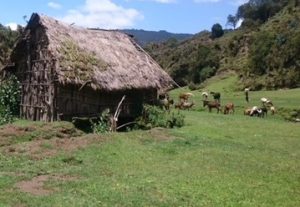ESSP Working Paper 122, by Fantu Bachewe, Bart Minten, Fanaye Tadesse, and Alemayehu S. Taffesse
Abstract: Livestock is important in Ethiopia’s agricultural economy as almost all farmers own some livestock. Livestock assets are valued at 720 USD per farm on average. Overall livestock output has grown rapidly over the last decade, estimated at almost 6 percent per year, but about 80 percent of that growth came from increases in the number of livestock. The stock of different livestock species was about 50 percent higher in 2015 than a decade earlier, while modern input use and improvements in production methods contributed little to growth in the livestock sector. Linked to improved access to extension and markets, adoption of improved breeds and improved feeding practices increased, but such adoption patterns started from a very low base. Within the livestock sector, cattle are dominant, making up an estimated three-quarters of the value of livestock stock. However, the share of cattle in total livestock output is declining, and small ruminants are on the rise, especially in pastoralist areas. Given the rapid growth in livestock numbers and the increasing livestock density per unit of land, we find that feeding practices are changing. Grazing land is declining in availability, so reliance on commercial feed markets is increasing. Access to vaccinations and veterinary service provision have improved, and livestock death rates declined slightly over the last decade. However, the number of livestock lost to deaths is still more than twice the number sold for meat production, indicating important challenges remaining for the development of the livestock sector in Ethiopia. Download the PDF.
